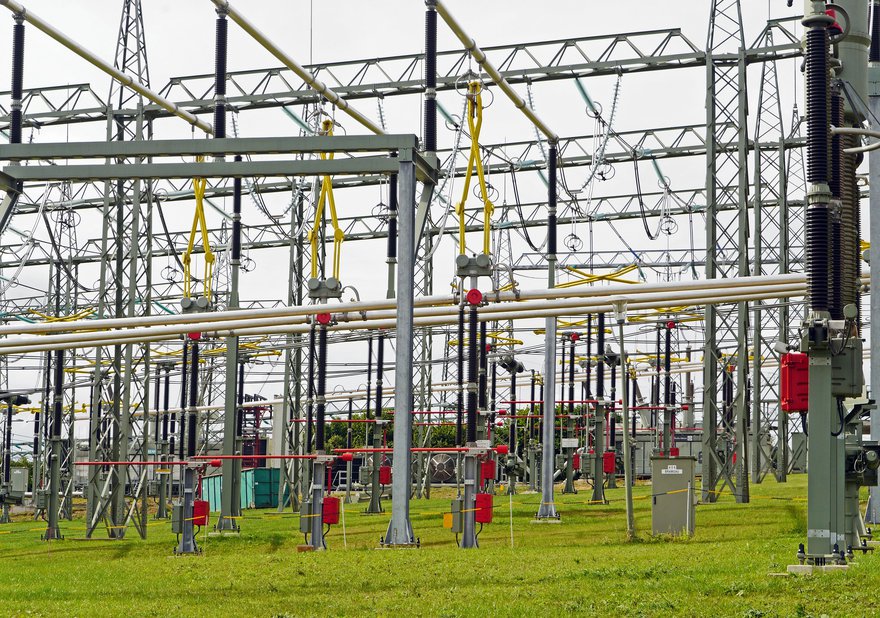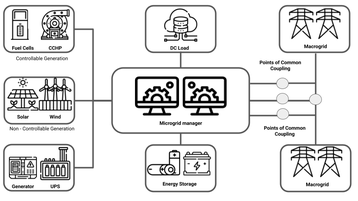Reliable power delivery remains one of the greatest engineering challenges we face, and the solutions to this challenge have driven advances in computing performance and capability.
This applies to both the phone in your pocket and the cloud services you are using today. Cloud services are delivered from data centers, where there have been continuous improvements in the delivery of constant reliable and uninterrupted power to swathes of computing devices housed tightly in a building.
All this is a direct response to our need as a society for more and more computing and digital services.
Every technological wave has a direct impact on the capacity demand seen by data centers. The latest numbers from the Uptime Institute show that the average per-chip power draw has shot up considerably in the last five years going from 300W to 800W at full load.
This is mostly due to technology we are already familiar with - cloud computing, 5G, the Internet of Things, and so on. These figures barely take into account the rising tidal wave of demand which Generative AI is already ushering into the industry.
Data centers have a power problem now, and they will have a power problem 20 years from now. Their proliferation means that they have to be a participant in pretty much any wider electric grid.
But a new way of looking at power infrastructure, called microgrids, paints the picture of turning them into ethical prosumers rather than just simple power-hungry buildings.
Grids and power delivery
To understand what microgrids are we first need to understand what is meant by a grid. The electrical grid is essentially the network that is required to bring energy from the producers to the consumers. In this, there are four stages; Generation, Transmission, Distribution, and Consumption.
The Generation stage is represented by the producer - this can be anything from a nuclear power plant to a wind turbine or a solar farm.
The transmission stage is where electricity needs to be sent over long distances and for this, its voltage is raised considerably to minimize losses.
The Distribution stage is where electricity is stepped down to levels appropriate for use in the home, office, or enterprise, where it is Consumed.
A grid encompasses all these stages, their relevant hardware, and functions.
A microgrid on the other hand locates all of these assets in very close proximity, on a single site. Within that site, there is a local power source, such as a solar farm or wind turbine, along with local distribution and local consumption. The microgrid is connected to the main grid but, because of its tight integration, it can also operate independently.
Depending on the economic conditions or the availability of power, a microgrid can operate entirely on the grid, using a mix of its own resources and the wider grid, or else go off-grid and operate entirely on its own.
If the local power source generates more power than is needed locally, the microgrid can even feed surplus generated capacity back to the larger grid, or as it is sometimes called, the macrogrid.
All data center facilities today have some form of backup power generation onsite. For most it's a diesel generator with an uninterruptible power supply (UPS) that is sized to the facility’s load.
Could this be considered a microgrid? After all, it has all elements of a grid present in very close proximity, with power generated on-site. It is not considered a microgrid because it is not designed to run all the time: the diesel only runs in an emergency.
But what about more novel on-site power generation approaches? This is where microgrid technology comes in.
Harmonizing the grid
Before we dive deeper into microgrids, we need to understand how and why a grid needs to be “harmonized” in order for it to allow for a smooth, quick, and efficient interchange of electricity across different regions, or even different countries. The harmonization of the grid requires several different mechanisms.
The most important ones represent synchronization - ensuring the system works at the same frequency across its constituent parts - this can be either 50Hz or 60Hz depending on the region. Another important mechanism is voltage and phase balancing - every part of the grid needs to be matched in terms of voltage and phases.
There are other aspects behind the harmonization of the grid, like controllers and switching infrastructure, but these are the most important ones - if a component part is misaligned in voltage, phase, or frequency, electrical energy transfer is difficult or impossible.
Renewable energy sources are desirable because they provide power without creating emissions. However, most renewable sources carry a challenge when attempting to use them for an application that requires continuous, reliable power - and that is their intermittency.
Wind can blow at high speeds one day, low speeds the next day; the sun shines with varied intensity each day, and not at all during the night. Even hydropower, for most purposes the most stable renewable source, will vary as the ebb and flow of water create different pressure in the reservoir.
Because of this intermittency, it is difficult for renewable energy sources to be directly connected to the wider grid - simply because they would de-harmonize it.
Campuses, business centers, or other sites may install renewable sources as part of a drive towards net-zero. They end up with a mix of uncontrollable sources of energy generation, such as solar, coupled with more controllable sources like fuel cells or cogeneration such as CCHP (Combined Cooling Heat and Power), which can be switched on at will.
These sources of electrical energy have to be combined and brought into sync in order to connect to the macrogrid.
Microgrids
This is where the need for microgrids comes from. As stated above, a microgrid is essentially a mini version of the main electric grid with all its component parts located in close proximity.
Microgrids are electrical networks designed to remain in operation at all times and they can work proactively. As seen in the diagram, the central piece of technology within a microgrid is represented by the microgrid controller and this can be either a piece of hardware or software.
This controller harmonizes all the electrical loads within the microgrid and further harmonizes them with the macrogrid if needed. The controller also is the mechanism through which utility power is transferred to the microgrid in the event of an outage, or for microgrid power to be activated in a utility outage.
In microgrids, islanding, or operating independently of the main grid is a near-instantaneous operation ensuring a seamless transition from the macrogrid power to microgrid generation. This goes a level beyond the traditional backup generator found on a data center site. While the backup generator can take up the slack and keep the site up for a time, the microgrid can operate indefinitely in this “island mode.” The switch back to the utility happens in the same seamless way once the utility outage ends.
Another key factor of microgrids is they operate in parallel with the macrogrid and this can enable the owner/operator to program certain metrics into the controller. For example if a data center is on a microgrid, and the owner wants to meet an annual average price per kWh target, the microgrid can switch the data center to utility or microgrid power at will, when price fluctuations for utility power drive the per kWh price above that threshold.
Once the surge in pricing has calmed down and values are back to manageable levels the owner/operator can switch back to utility power.
The same applies to sustainability targets in terms of energy mix and carbon intensity. The controller will leverage the generation resources that best match these targets. If the utility energy mix is mostly driven by coal and the microgrid has, for example, a wind farm on site - the controller would skew the power use to take power from the wind farm whenever it is available, picking the source to achieve the targets.
From consumer to prosumer
The microgrid controller also brings to the fore the notion of data centers acting as prosumers instead of just huge consumers. With enough generation sources, surplus capacity can be sold back to the macrogrid when it's economically feasible.
Arguably microgrids can deliver a higher level of trust than traditional backup generators which are only fired up when necessary.
Because microgrids are in constant operation, any malfunction or defect is quickly identified and fixed, while the utility power is available to keep the site live. Many data center outages are caused by latent defects in the classic generator and UPS system emergency backup generation, which only become apparent when they are switched on - precisely at the point when they are vitally needed.
As with data center infrastructure management (DCIM) inside the data center, the microgrid controller can deliver a plethora of benefits from continuous data gathering, logging, and analytics. Taking it a step further and applying AI to these data sets can lead to a more proactive management of the whole microgrid.
For example, drawing in local weather data can inform the microgrid controller what wind speeds will occur for the next 72 hours. This will give an estimate of the amount of power that will be generated over this time period, and allow the facility to plan when and how much utility power to use. This will improve the data center facility’s TCO.
A novel approach to backup
Microgrid technology is now mature enough to be adopted by wider industries and data center owners/operators should consider if such a solution is fit for purpose at their facilities.
As we already know, the largest chunk of data center outages are traced back to the loss of power. This risk is traditionally addressed by generators and UPS systems. However, as discussed previously, latent defects can and will affect the reliability and availability of the facility’s backup provision.
Microgrids go a step further and act as a more reliable way of avoiding utility outages. Not only that, they can also provide more benefits like additional energy management tools, cost reduction methods and help with achieving sustainability targets.






